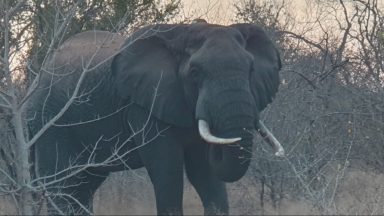Careen Nyambe is one of the female scouts in the Simalaha Community Conservancy. Presently 12 out of the 35 scouts in Simalaha are women, which represents huge progress by Peace Parks and partners in providing opportunities for a group that, in the past, were often overlooked.
Careen started working as part of the team responsible for maintaining the fences in the conservancy, before going on to become a scout after completing her training at the Chunga Wildlife College.
Now Careen and her fellow team member, Joseph Matokwani, form part of the Zebra Team, just one of the scout teams in the Simalaha Community Conservancy that is responsible for looking after and monitoring the wild animals in the sanctuary. Teams proudly choose there names from icon animals in Simalaha, so they are always delighted to see healthy herds of wildlife. Ultimately these hold the key to a wildlife economy that will promote a prosperous future for everyone in the community. As part of Peace Parks’ plan to develop large landscapes with healthy ecosystems, species protection is vital.
The involvement of patrols in looking after wildlife in the Simalaha Community Conservancy comes as a result of the Sesheke and Sekhute Chiefdoms taking ownership of their own destiny. Aware that the future of the communities is in large part down to thriving wildlife populations and a healthy environment, the chiefs agreed that their land be developed as a wildlife conservancy. This allows for the conservation of the area and viable natural resource management, as well as promotes income generation through nature-based economies and tourism opportunities. The chiefs chose to follow a community-led approach to improve basic human rights – such as access to food, health, livelihood opportunities and education – by responsibly managing and protecting natural resources and wildlife.
The Conservancy comprises 180 000 ha of communal land and lies within one of six key wildlife dispersal areas in the Kavango Zambezi Transfrontier Conservation Area, namely the Chobe Zambezi dispersal area that reaches from Chobe National Park in Botswana to Kafue National Park in Zambia. Its location is fundamental to re-establishing wildlife populations and their migration routes in the Kavango Zambezi Transfrontier Conservation Area which is the biggest terrestrial cross-border conservation system in the world. It connects 36 protected areas across Angola, Botswana, Namibia, Zambia and Zimbabwe.


